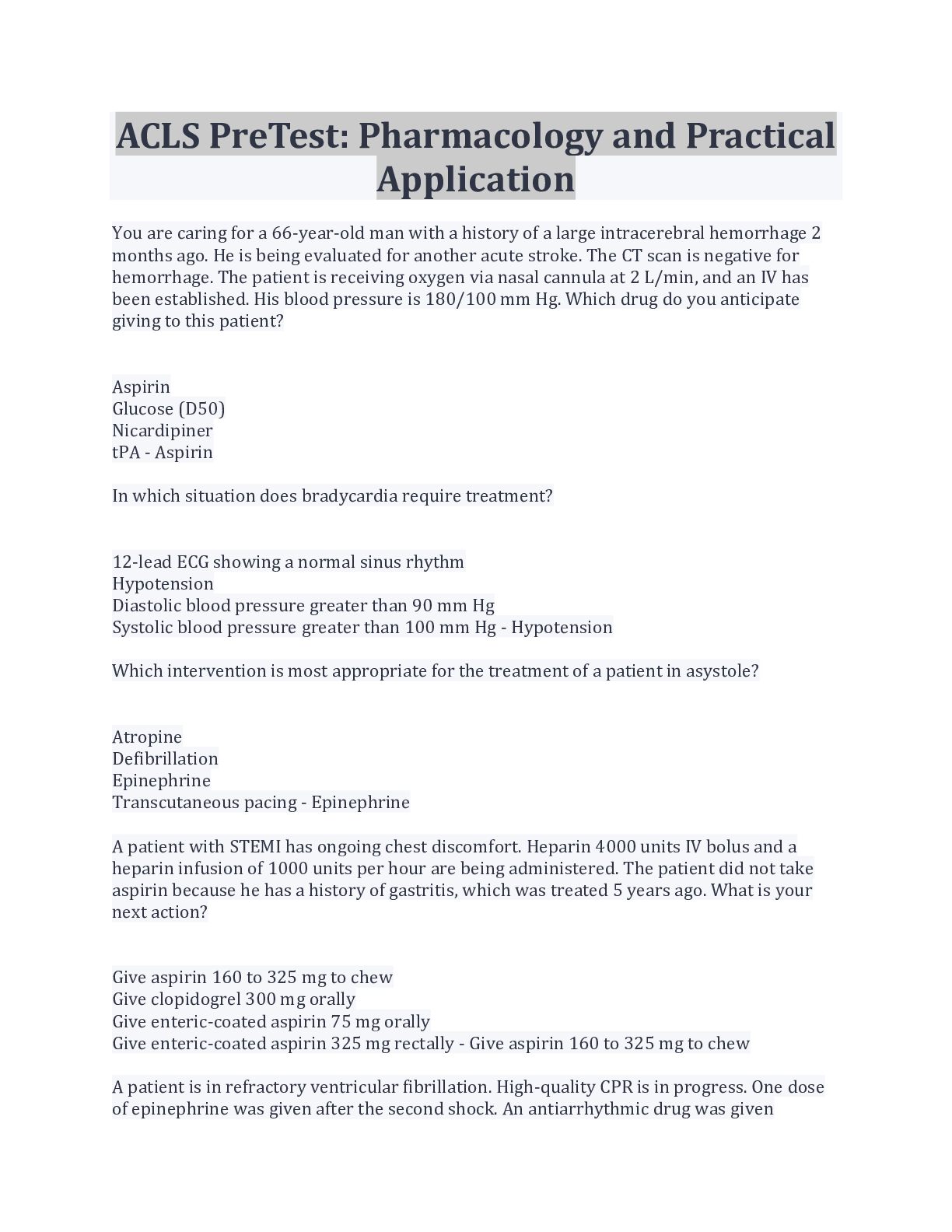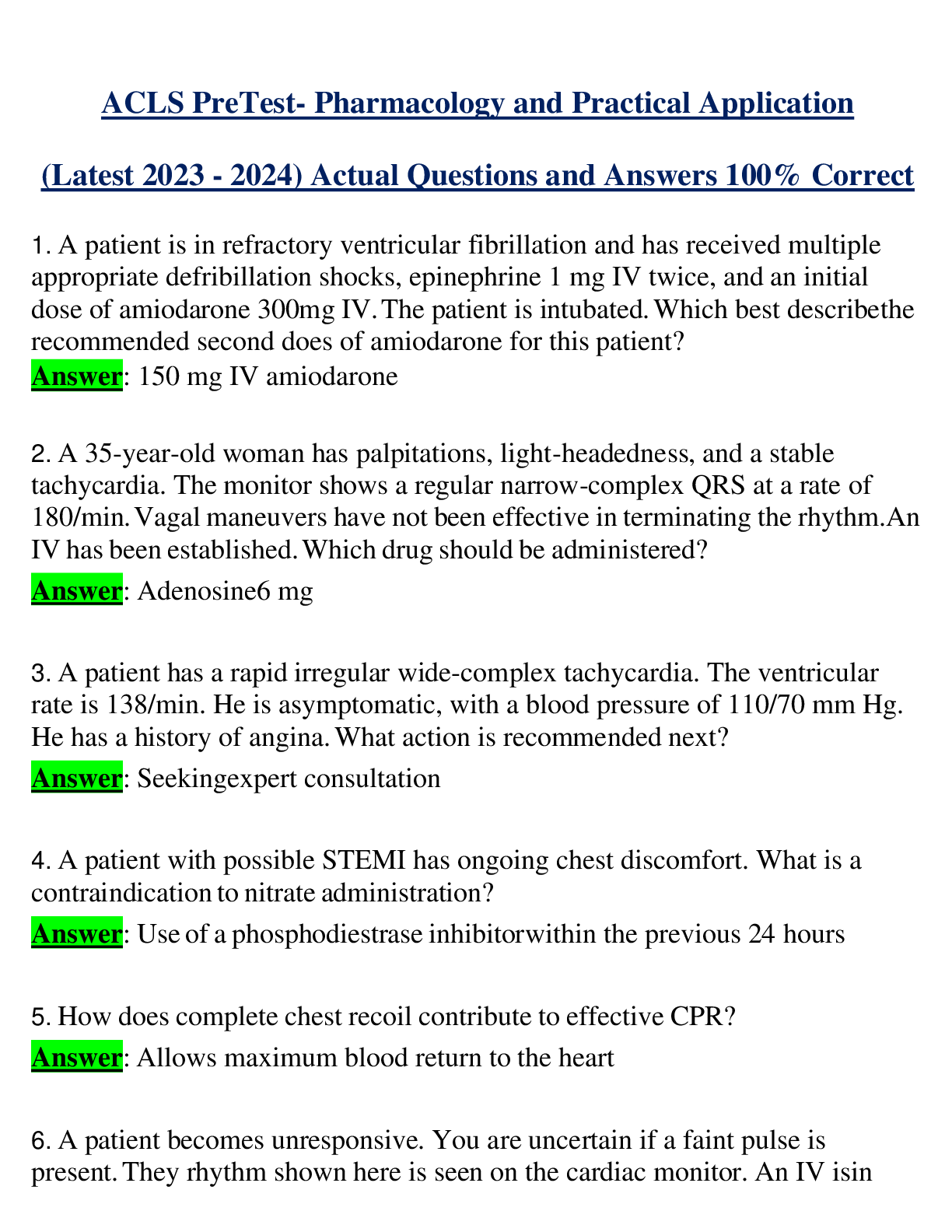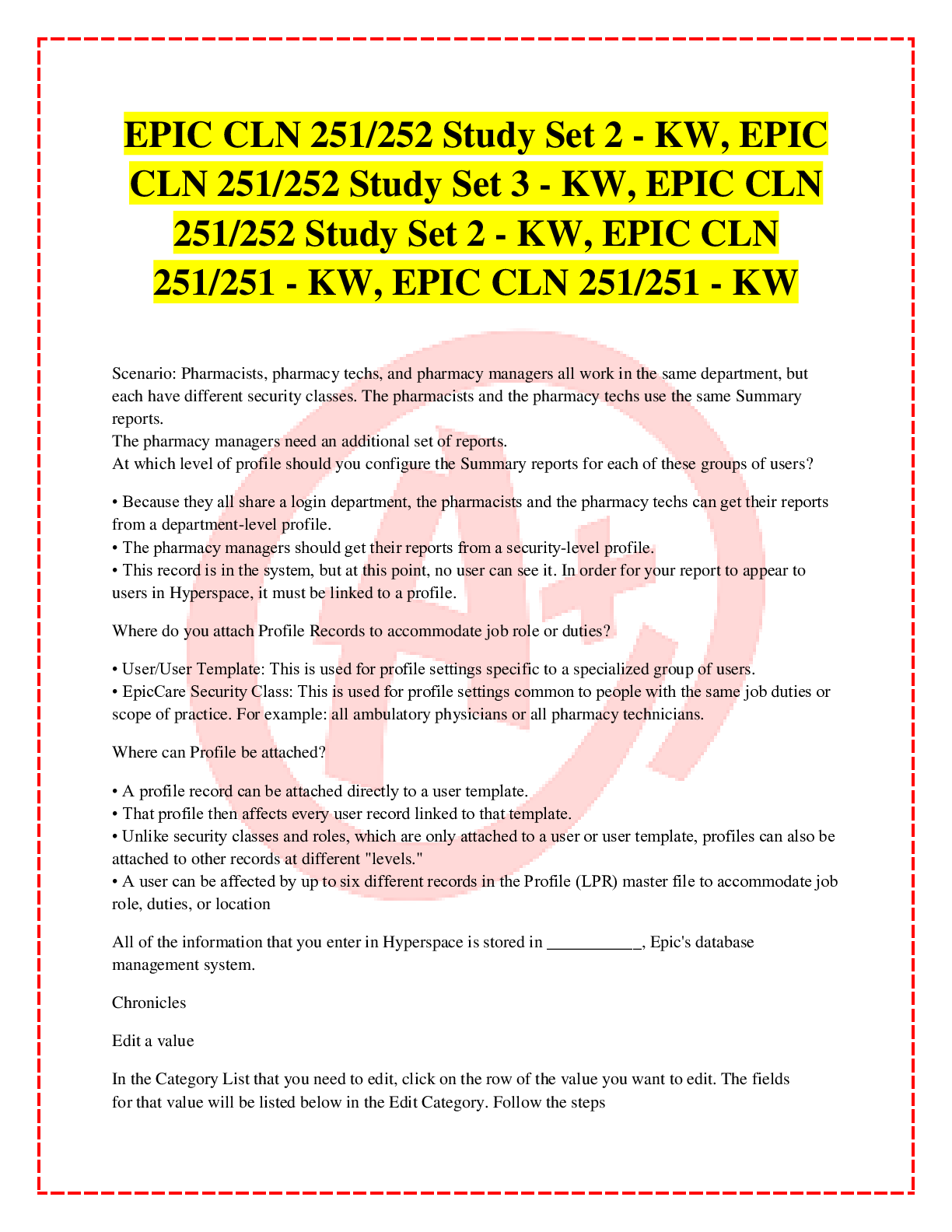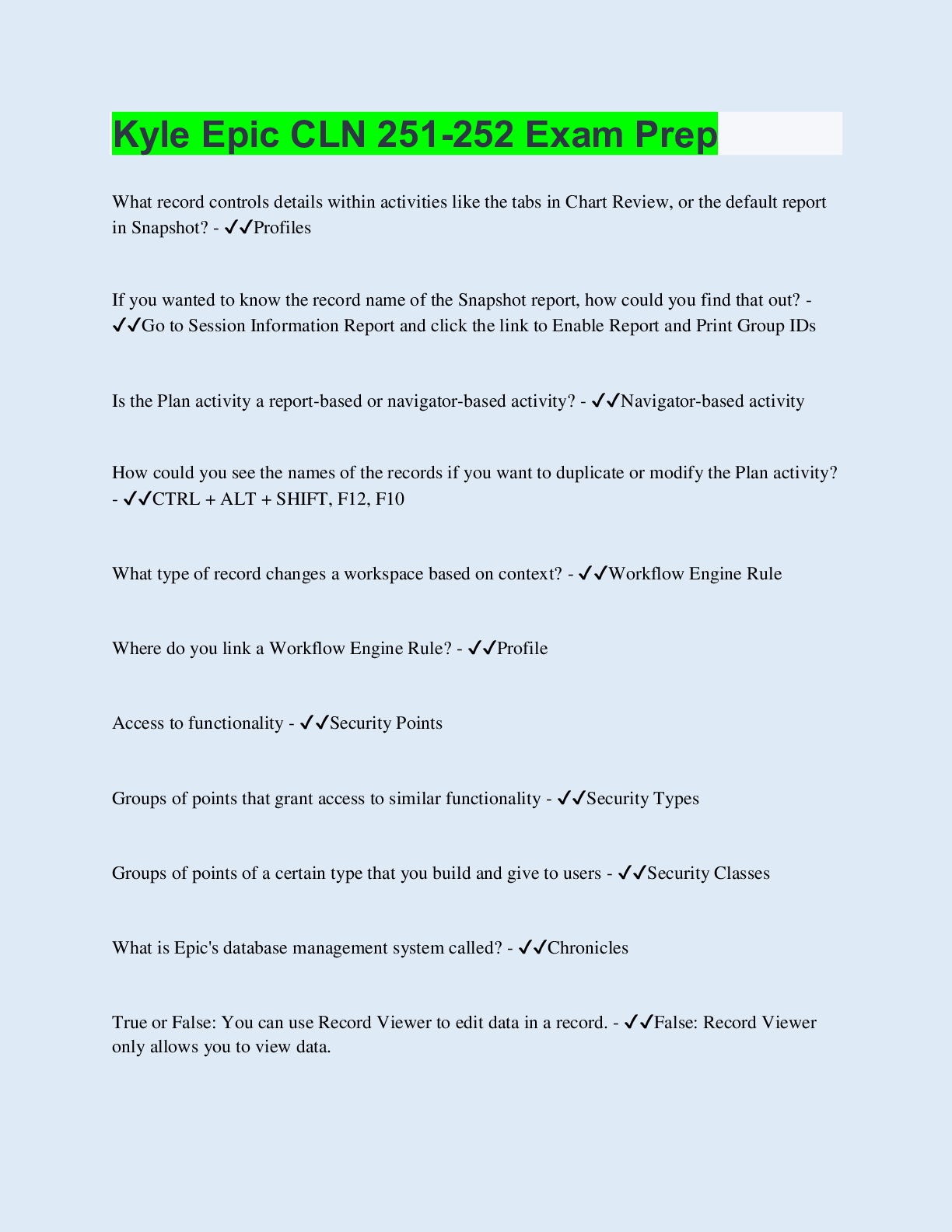Health Care > EXAM > ACLS PreTest: Pharmacology and Practical Application (2022) all answered correctly. (All)
ACLS PreTest: Pharmacology and Practical Application (2022) all answered correctly.
Document Content and Description Below
ACLS Pretest: Pharmacology and Practical Application_ 2022. You are caring for a 66-year-old man with a history of a large intracerebral hemorrhage 2 months ago. He is being evaluated for another a... cute stroke. The CT scan is negative for hemorrhage. The patient is receiving oxygen via nasal cannula at 2 L/min, and an IV has been established. His blood pressure is 180/100 mm Hg. Which drug do you anticipate giving to this patient? Aspirin Glucose (D50) Nicardipiner tPA In which situation does bradycardia require treatment? 12-lead ECG showing a normal sinus rhythm Hypotension Diastolic blood pressure greater than 90 mm Hg Systolic blood pressure greater than 100 mm Hg Which intervention is most appropriate for the treatment of a patient in asystole? Atropine Defibrillation Epinephrine Transcutaneous pacing A patient with STEMI has ongoing chest discomfort. Heparin 4000 units IV bolus and a heparin infusion of 1000 units per hour are being administered. The patient did not take aspirin because he has a history of gastritis, which was treated 5 years ago. What is your next action? Give aspirin 160 to 325 mg to chew Give clopidogrel 300 mg orally Give enteric-coated aspirin 75 mg orally Give enteric-coated aspirin 325 mg rectally A patient is in refractory ventricular fibrillation. High-quality CPR is in progress. One dose of epinephrine was given after the second shock. An antiarrhythmic drug was given immediately after the third shock. You are the team leader. Which medication do you order next? Epinephrine 1 mg Epinephrine 3 mg Sodium bicarbonate 50 mEq A second dose of the antiarrhythmic drug A patient with sinus bradycardia and a heart rate of 42/min has diaphoresis and a blood pressure of 80/60 mm Hg. What is the initial dose of atropine? 0.1 mg 0.5 mg 1 mg 3 mg A monitored patient in the ICU developed a sudden onset of narrow-complex tachycardia at a rate of 220/min. The patient's blood pressure is 128/58 mm Hg, the PETCO2 is 38 mm Hg, and the pulse oximetry reading is 98%. There is vascular access in the left arm, and the patient has not been given any vasoactive drugs. A 12-lead ECG confirms a supraventricular tachycardia with no evidence of ischemia or infarction. The heart rate has not responded to vagal maneuvers. What is your next action? Administer adenosine 6 mg IV push Administer amiodarone 300 mg IV push Perform synchronized cardioversion at 50 J Perform synchronized cardioversion at 200 J You arrive on the scene with the code team. High-quality CPR is in progress. An AED has previously advised "no shock indicated." A rhythm check now finds asystole. After resuming high-quality compressions, which action do you take next? Call for a pulse check Establish IV or IO access Insert a laryngeal airway Perform endotracheal intubation A patient is in pulseless ventricular tachycardia. Two shocks and 1 dose of epinephrine have been given. Which drug should be given next? Adenosine 6 mg Amiodarone 300 mg Epinephrine 3 mg Lidocaine 0.5 mg/kg A 57-year-old woman has palpitations, chest discomfort, and tachycardia. The monitor shows a regular wide-complex QRS at a rate of 180/min. She becomes diaphoretic, and her blood pressure is 80/60 mm Hg. Which action do you take next? Establish IV access Obtain a 12-lead ECG Perform electrical cardioversion Seek expert consultation A patient is in cardiac arrest. Ventricular fibrillation has been refractory to an initial shock. If no pathway for medication administration is in place, which method is preferred? Central line Endotracheal tube External jugular vein IV or IO A patient has sinus bradycardia with a heart rate of 36/min. Atropine has been administered to a total dose of 3 mg. A transcutaneous pacemaker has failed to capture. The patient is confused, and her blood pressure is 88/56 mm Hg. Which therapy is now indicated? Atropine 1 mg Epinephrine 2 to 10 mcg/min Adenosine 6 mg Normal saline 250 mL to 500 mL bolus A 62-year-old man suddenly experienced difficulty speaking and left-sided weakness. He meets initial criteria for fibrinolytic therapy, and a CT scan of the brain is ordered. Which best describes the guidelines for antiplatelet and fibrinolytic therapy? Give aspirin 160 to 325 mg to be chewed immediately Give aspirin 160 mg and clopidogrel 75 mg orally Give heparin if the CT scan is negative for hemorrhage Hold aspirin for at least 24 hours if rtPA is administered What is the indication for the use of magnesium in cardiac arrest? Ventricular tachycardia associated with a normal QT interval Shock-refractory monomorphic ventricular tachycardia Pulseless ventricular tachycardia-associated torsades de pointes Shock-refractory ventricular fibrillation - Pulseless ventricular tachycardia A patient is in cardiac arrest. Ventricular fibrillation has been refractory to a second shock. Which drug should be administered first? Atropine 1 mg IV/IO Epinephrine 1 mg IV/IO Lidocaine 1 mg/kg IV/IO Sodium bicarbonate 50 mEq IV/IO Which action should you take immediately after providing an AED shock? Check the pulse rate Prepare to deliver a second shock Resume chest compressions Start rescue breathing What action minimizes the risk of air entering the victim's stomach during bag-mask ventilation? Ventilating until you see the chest rise Ventilating as quickly as you can Squeezing the bag with both hands Delivering the largest breath you can Your patient is a 56-year-old woman with a history of type 2 diabetes who reports feeling dizzy. She is pale and diaphoretic. Her blood pressure is 80/60 mm Hg. The cardiac monitor documents the rhythm shown here. She is receiving oxygen at 4 L/min by nasal cannula, and an IV has been established. What do you administer next? (sinus brady) Atropine 0.5 mg IV Dopamine at 2 to 10 mcg/kg per minute Glucose 50% IV push Morphine sulfate 4 mg IV How often should you switch chest compressors to avoid fatigue? About every 2 minutes About every 3 minutes About every 4 minutes About every 5 minutes A 45-year-old woman with a history of palpitations develops light-headedness and palpitations. She has received adenosine 6 mg IV for the rhythm shown here, without conversion of the rhythm. She is now extremely apprehensive. Her blood pressure is 128/70 mm Hg. What is the next appropriate intervention? SVT Administer adenosine 12 mg IV Perform unsynchronized cardioversion Perform vagal maneuvers Perform synchronized cardioversion What is the recommended compression rate for high-quality CPR? 50 to 60 compressions per minute 70 to 80 compressions per minute 90 to 100 compressions per minute 100 to 120 compressions per minute A 35-year-old woman presents with a chief complaint of palpitations. She has no chest discomfort, shortness of breath, or light-headedness. Her blood pressure is 120/78 mm Hg. Which intervention is indicated first?SVT Adenosine 3 mg IV bolus Adenosine 12 mg IV slow push (over 1 to 2 minutes)Metoprolol 5 mg IV and repeat if necessary Vagal maneuvers After initiation of CPR and 1 shock for ventricular fibrillation, this rhythm is present on the next rhythm check. A second shock is given, and chest compressions are resumed immediately. An IV is in place, and no drugs have been given. Bag-mask ventilations are producing visible chest rise. What is your next intervention? V fib Administer 3 sequential (stacked) shocks at 360 J (monophasic defibrillator) Give amiodarone 300 mg IV/IO Give epinephrine 1 mg IV/IO Intubate and administer 100% oxygen You arrive on the scene to find CPR in progress. Nursing staff report the patient was recovering from a pulmonary embolism and suddenly collapsed. Two shocks have been delivered, and an IV has been initiated. What do you administer now? vfib Atropine 0.5 mg IV Epinephrine 1 mg IV Endotracheal intubation Transcutaneous pacing What is the recommended depth of chest compressions for an adult victim? At least 1.5 inches At least 2 inches At least 2.5 inches At least 3 inches You are the code team leader and arrive to find a patient with CPR in progress. On the next rhythm check, you see the rhythm shown here. Team members tell you that the patient was well but reported chest discomfort and then collapsed. She has no pulse or respirations. Bag-mask ventilations are producing visible chest rise, and IO access has been established. Which intervention would be your next action? PEA Atropine 1 mg Dopamine at 10 to 20 mcg/kg per minute Epinephrine 1 mg Intubation and administration of 100% oxygen Your patient is not responsive and is not breathing. You can palpate a carotid pulse. Which action do you take next? Apply an AED Obtain a 12-lead ECG Start an IV Start rescue breathing A patient's 12-lead ECG is transmitted by the paramedics and shows a STEMI. When the patient arrives in the emergency department, the rhythm shown here is seen on the cardiac monitor. The patient has resolution of moderate (5/10) chest pain after 3 doses of sublingual nitroglycerin. Blood pressure is 104/70 mm Hg. Which intervention is most important in reducing this patient's in-hospital and 30-day mortality rate? ST Elevation Application of transcutaneous pacemaker Atropine administration Nitroglycerin administration Reperfusion therapy You are providing bag-mask ventilations to a patient in respiratory arrest. How often should you provide ventilations? About every 5-6 seconds About every 8-10 seconds About every 12-14 seconds About every 17-18 seconds Which action is likely to cause air to enter the victim's stomach (gastric inflation) during bag-mask ventilation? Giving breaths over 1 second Ventilating too quickly Providing a good seal between the face and the mask Providing just enough volume for the chest to rise A patient was in refractory ventricular fibrillation. A third shock has just been administered. Your team looks to you for instructions. What is your next action? Asystole now Check the carotid pulse Give amiodarone 300 mg IV Give atropine 1 mg IV Resume high-quality chest compressions What is the maximum interval for pausing chest compressions? 10 seconds 15 seconds 20 seconds 25 seconds [Show More]
Last updated: 1 year ago
Preview 1 out of 9 pages
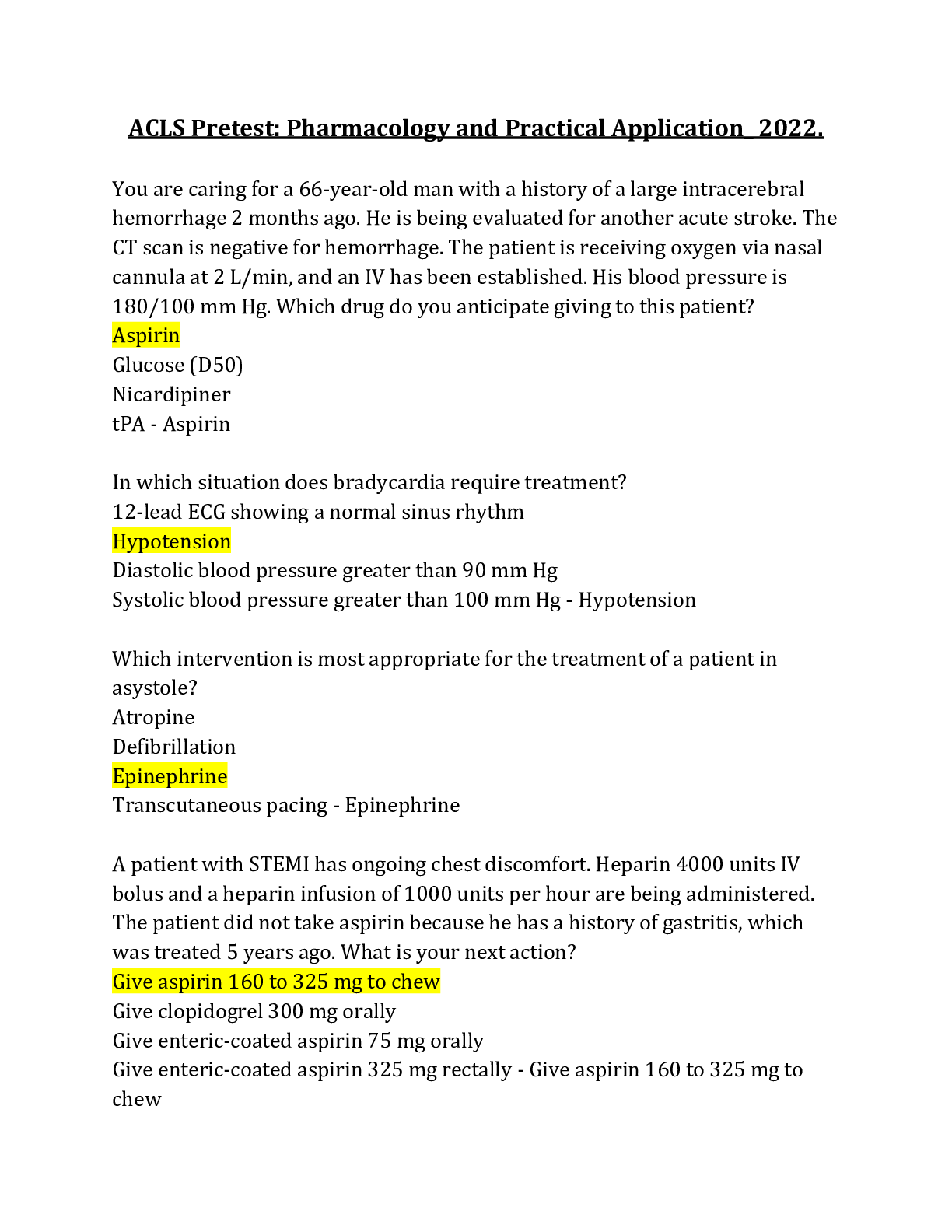
Reviews( 0 )
Document information
Connected school, study & course
About the document
Uploaded On
May 07, 2022
Number of pages
9
Written in
Additional information
This document has been written for:
Uploaded
May 07, 2022
Downloads
0
Views
110

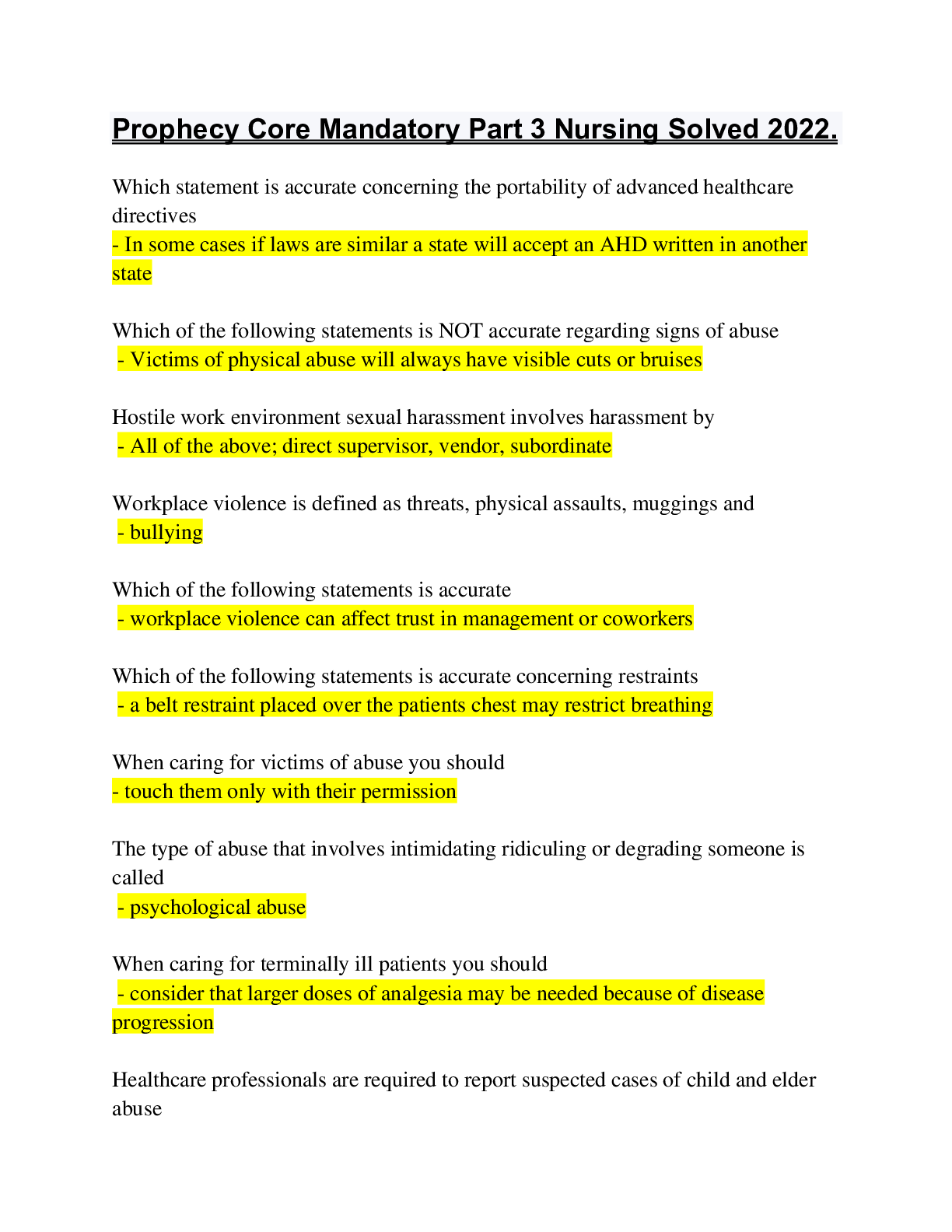
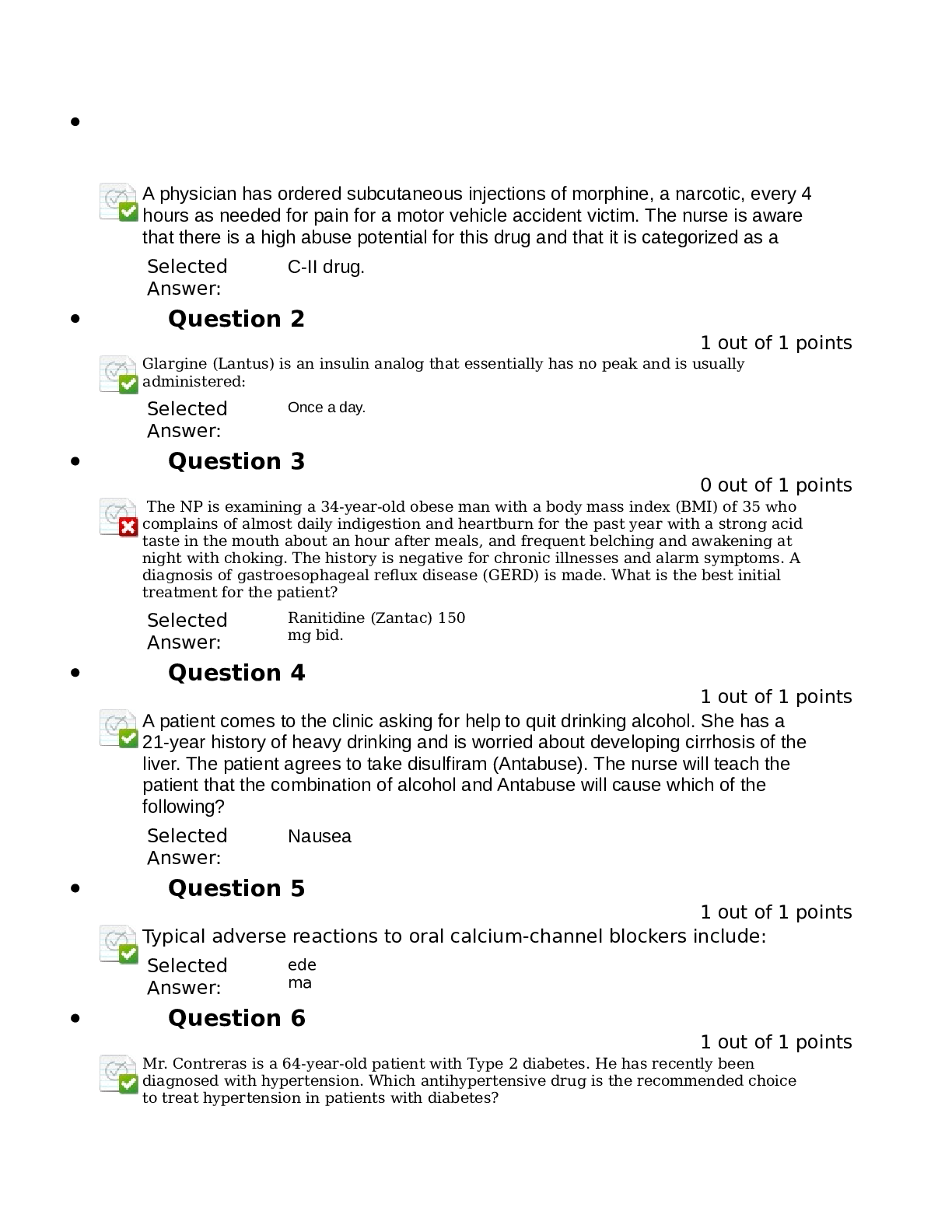
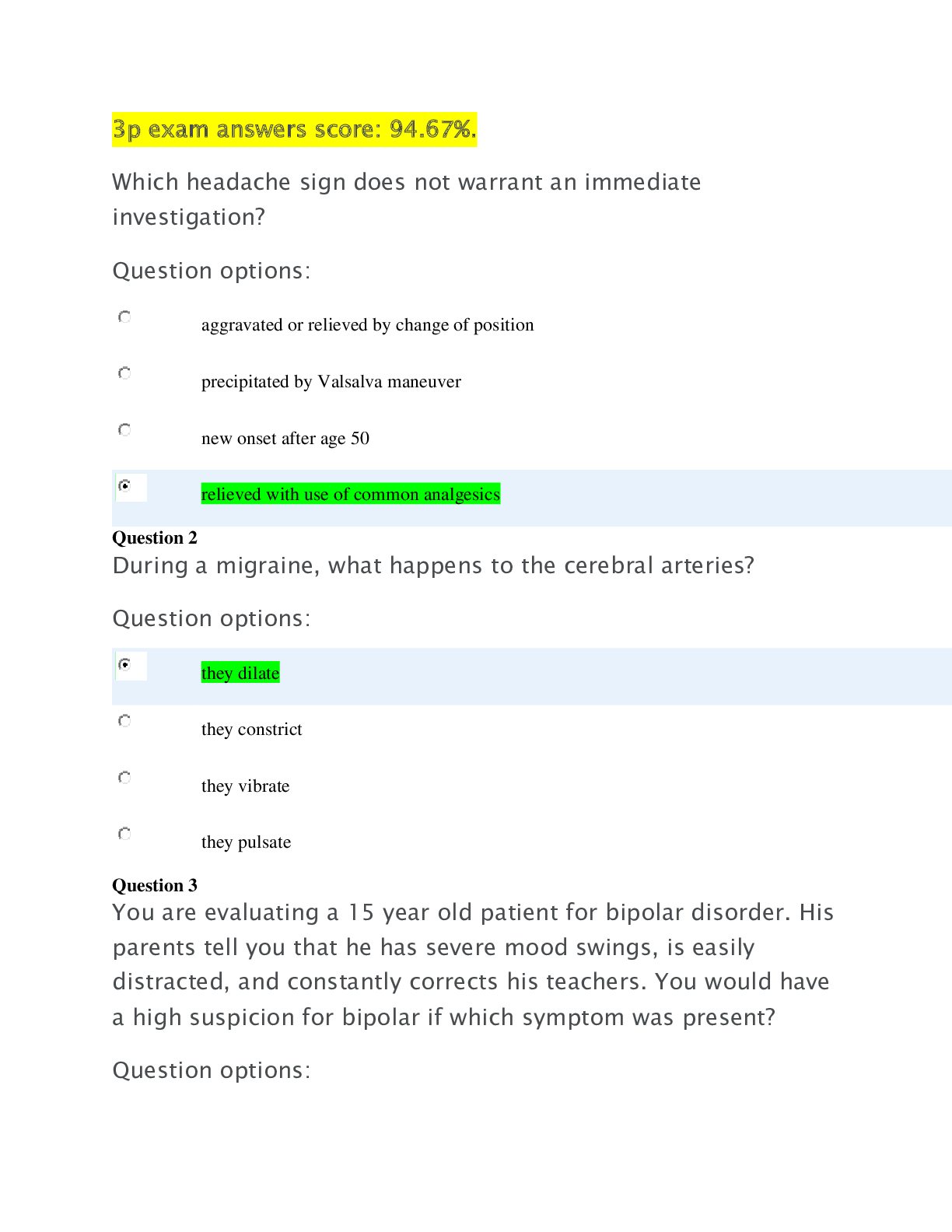
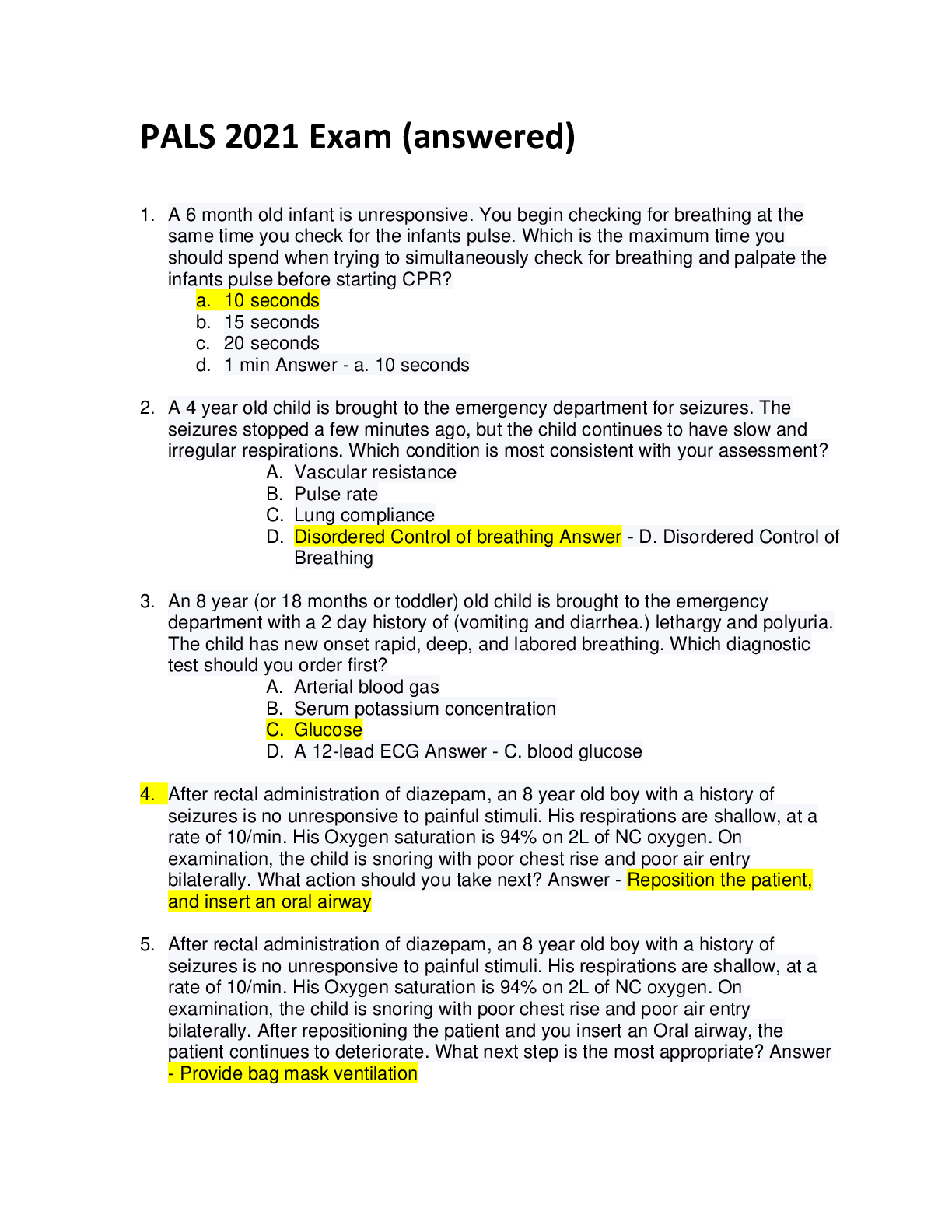
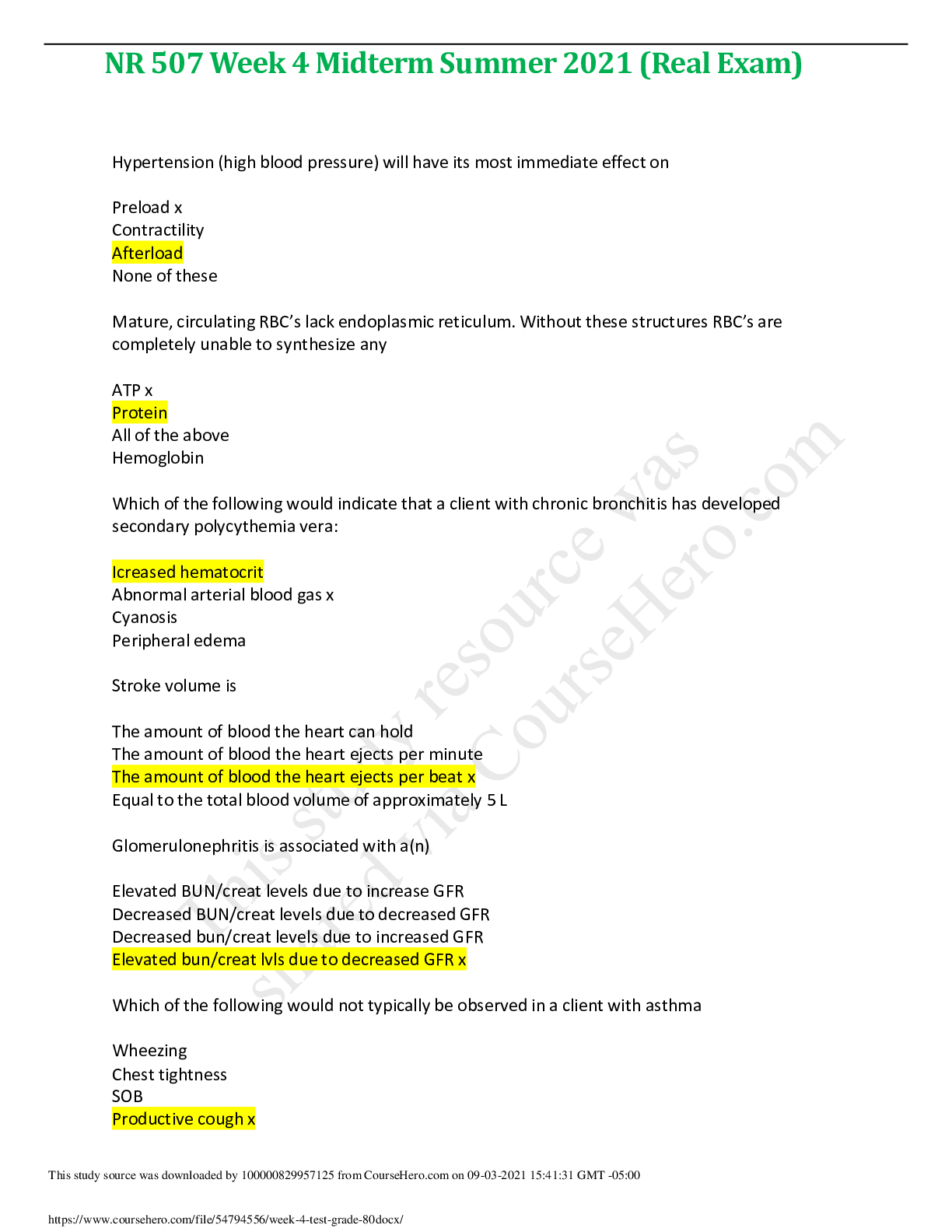


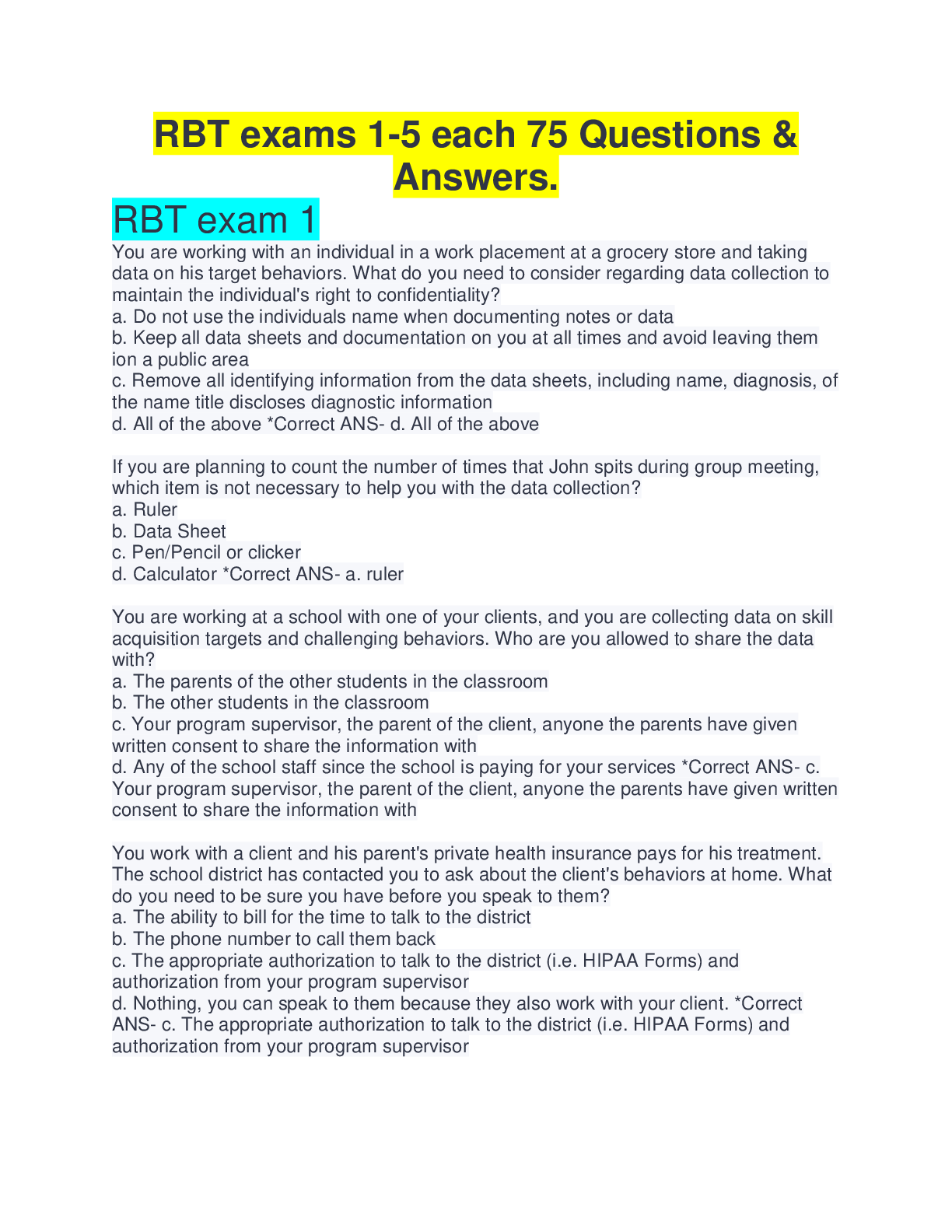

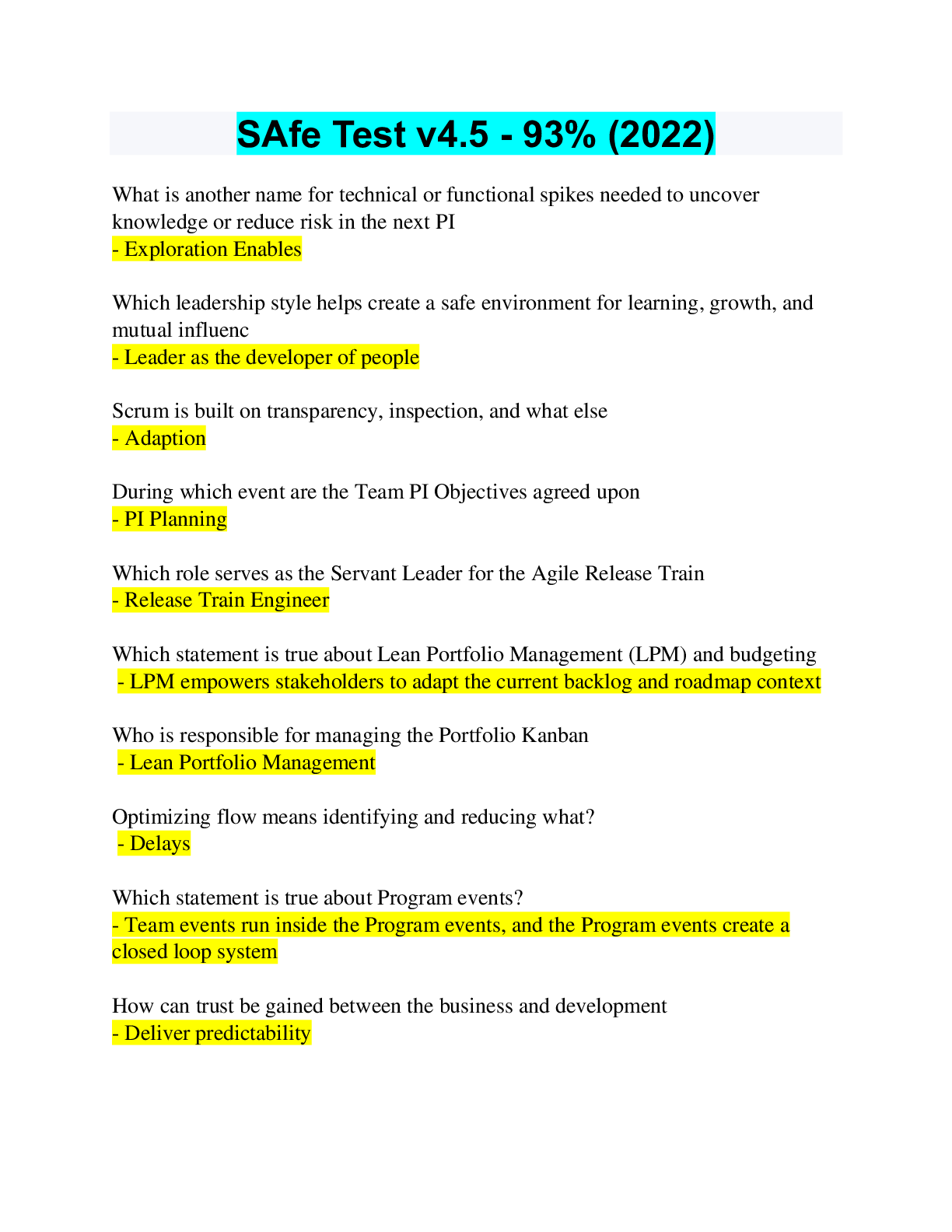
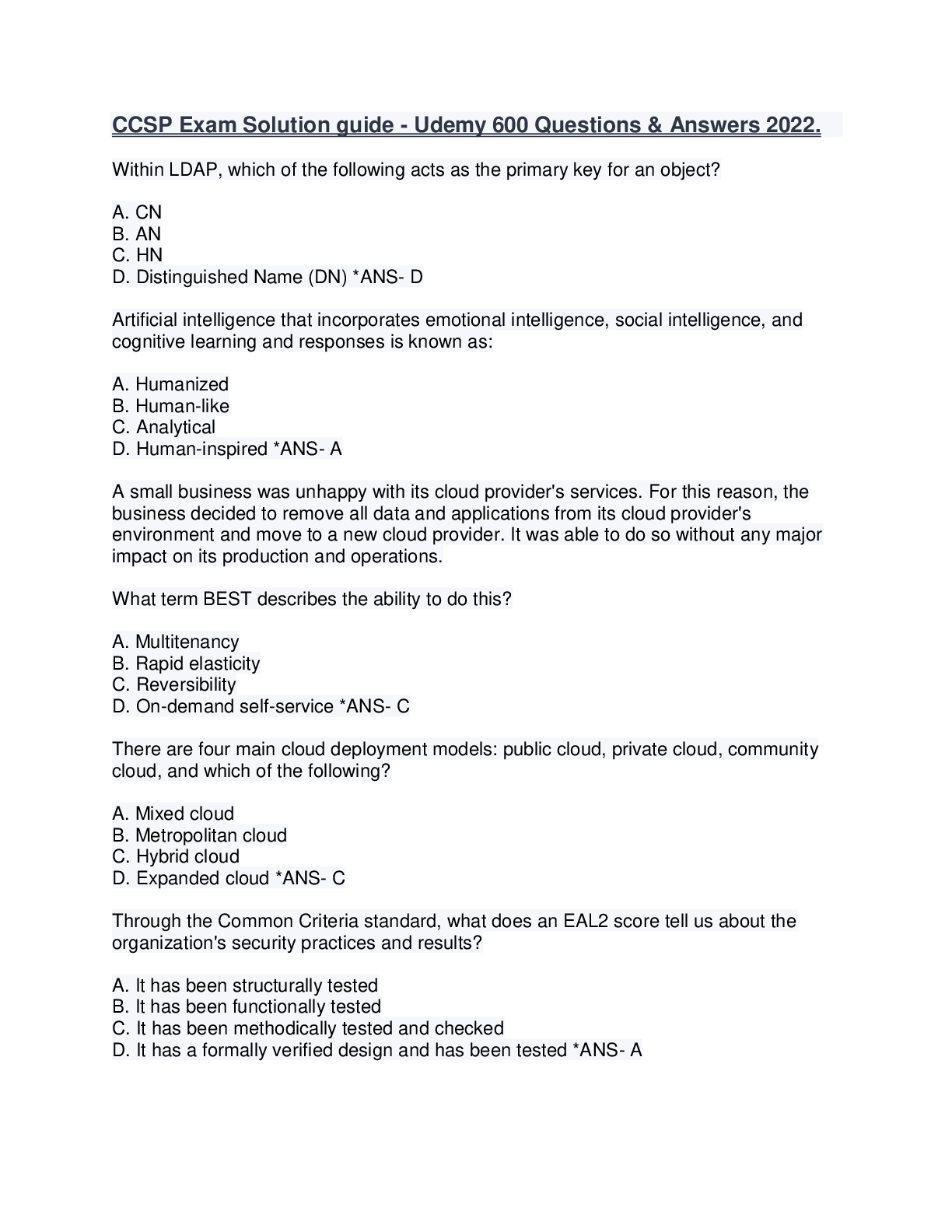
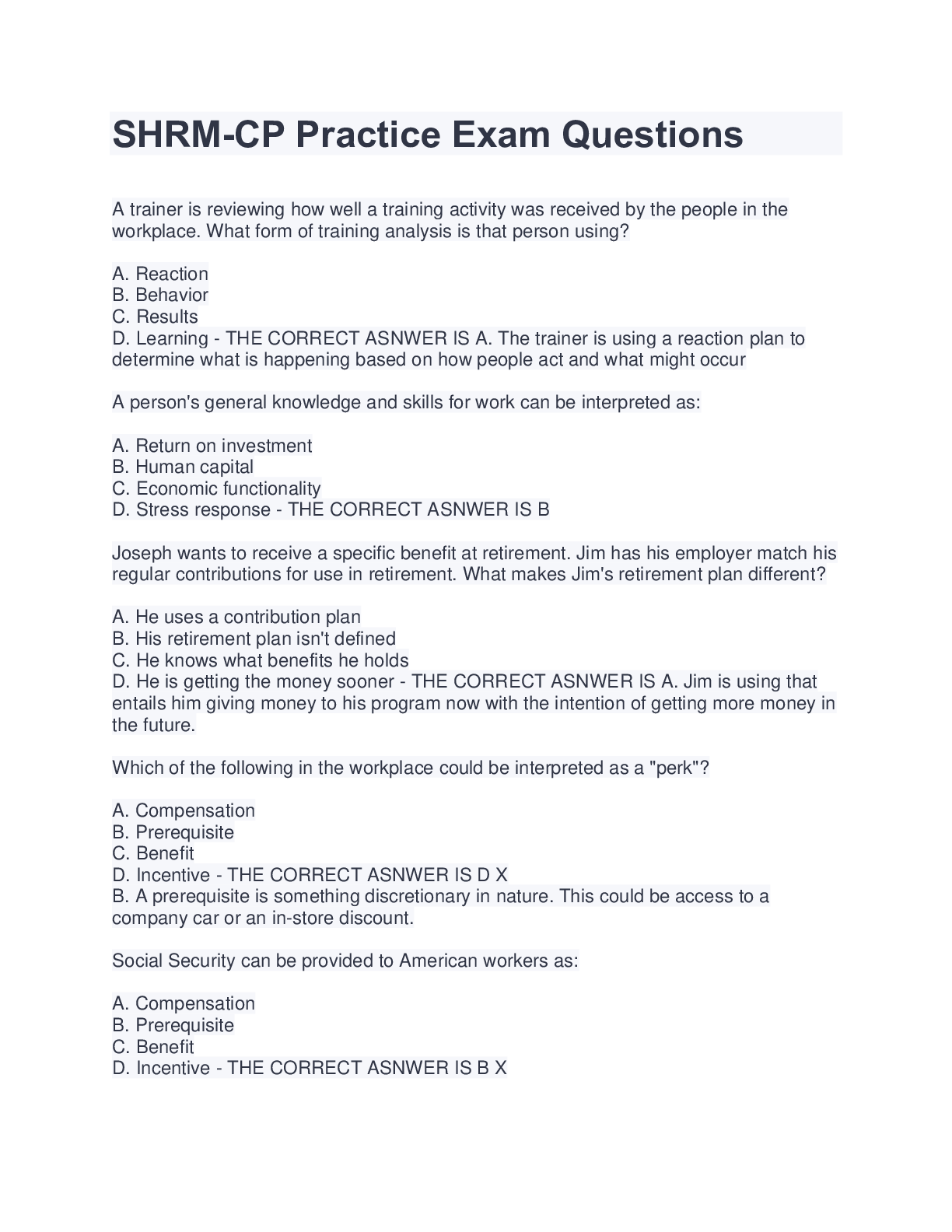

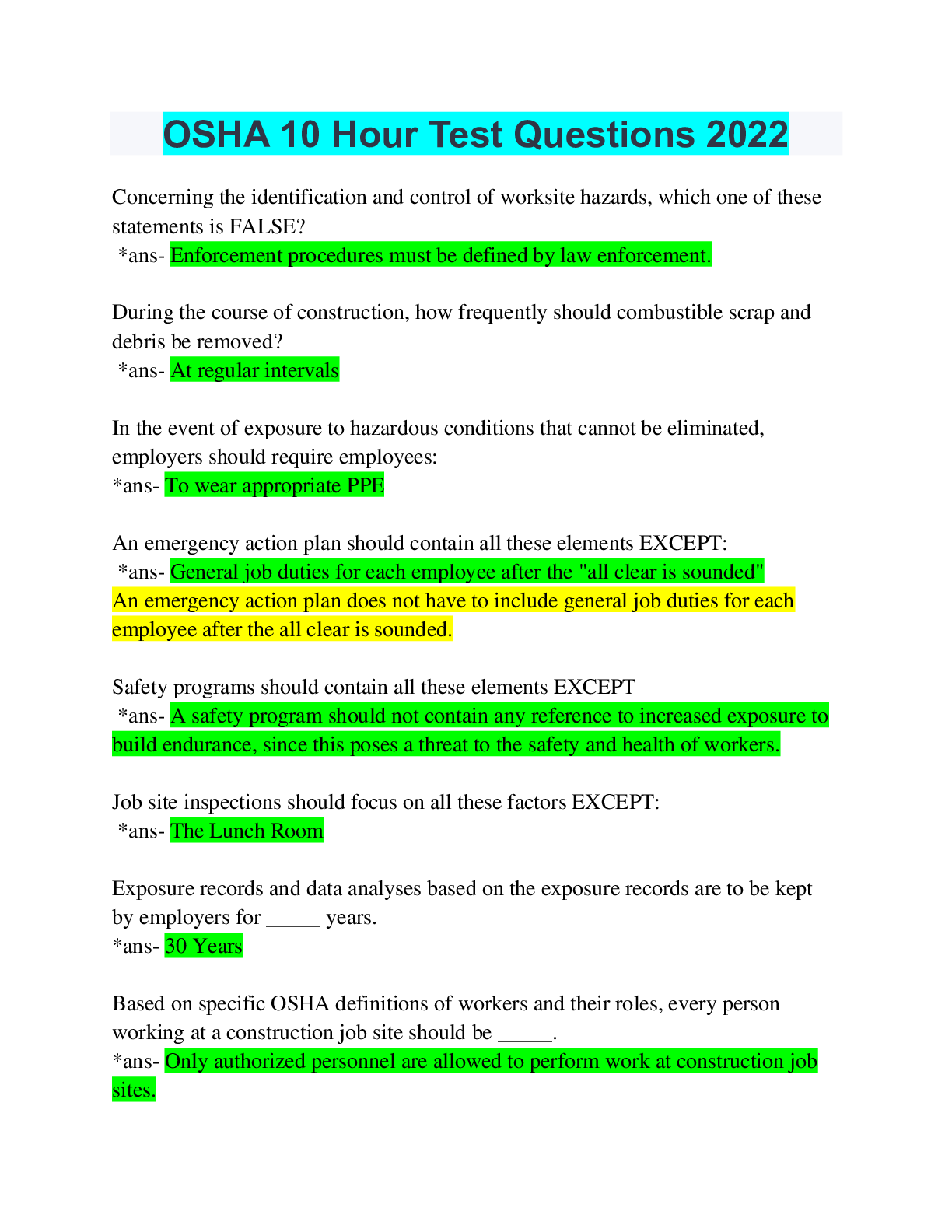
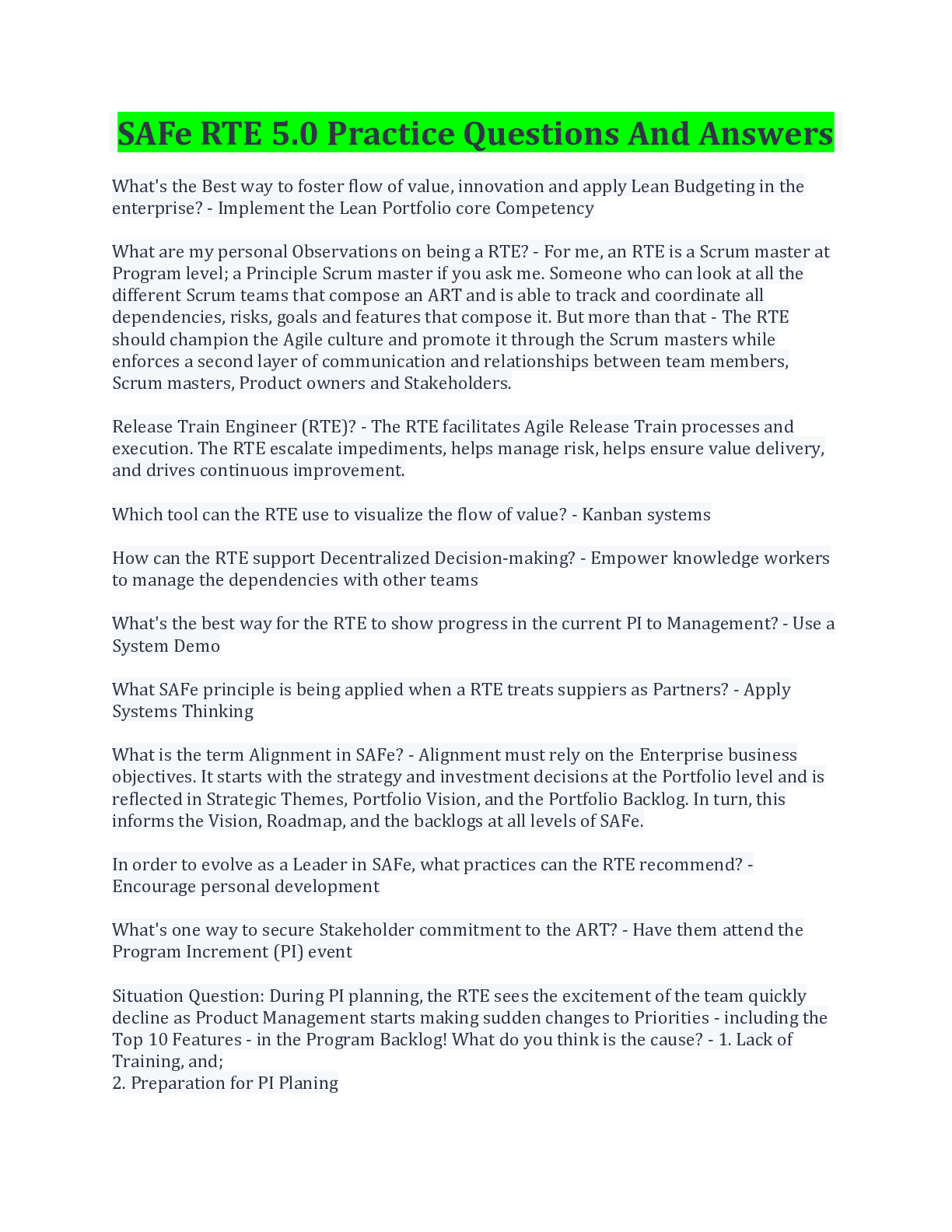

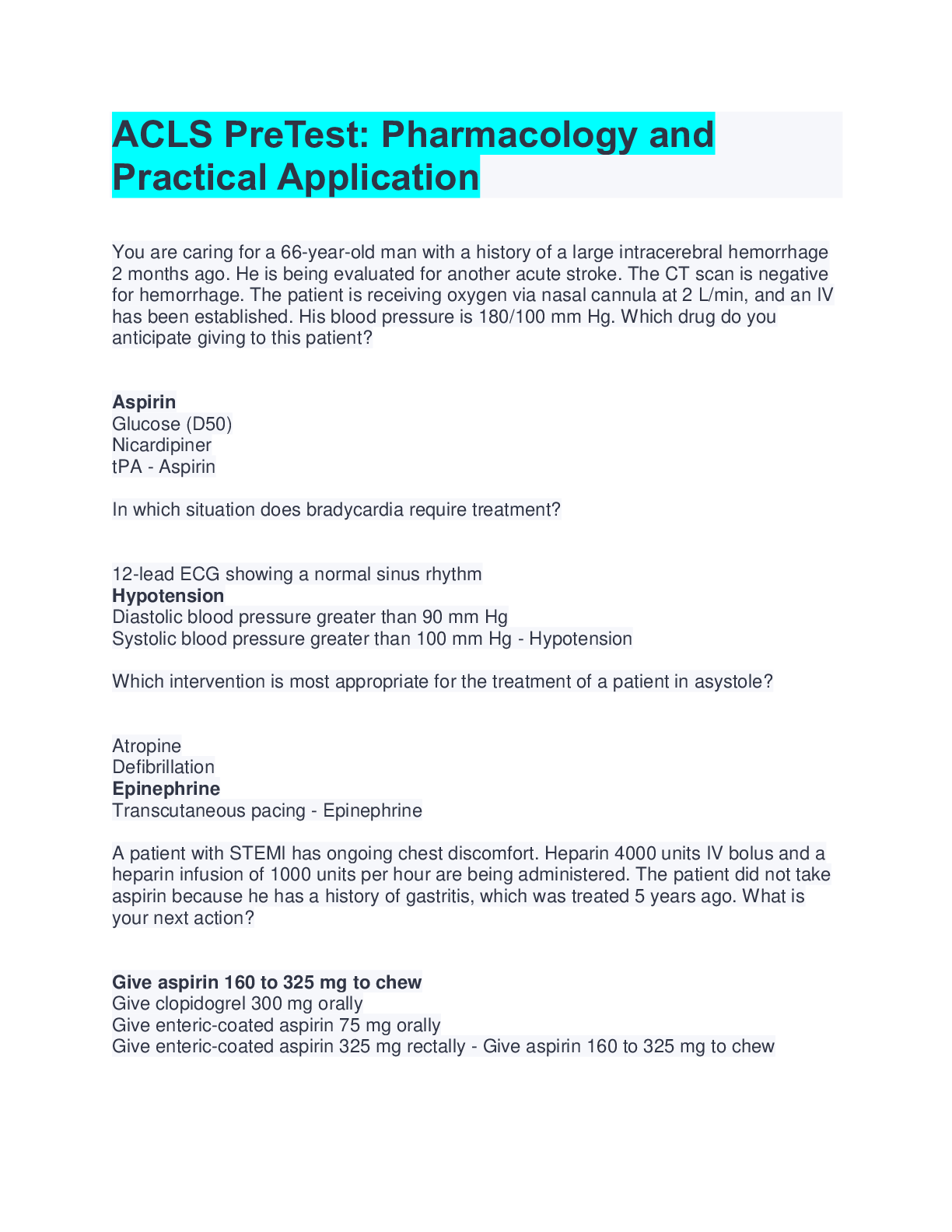
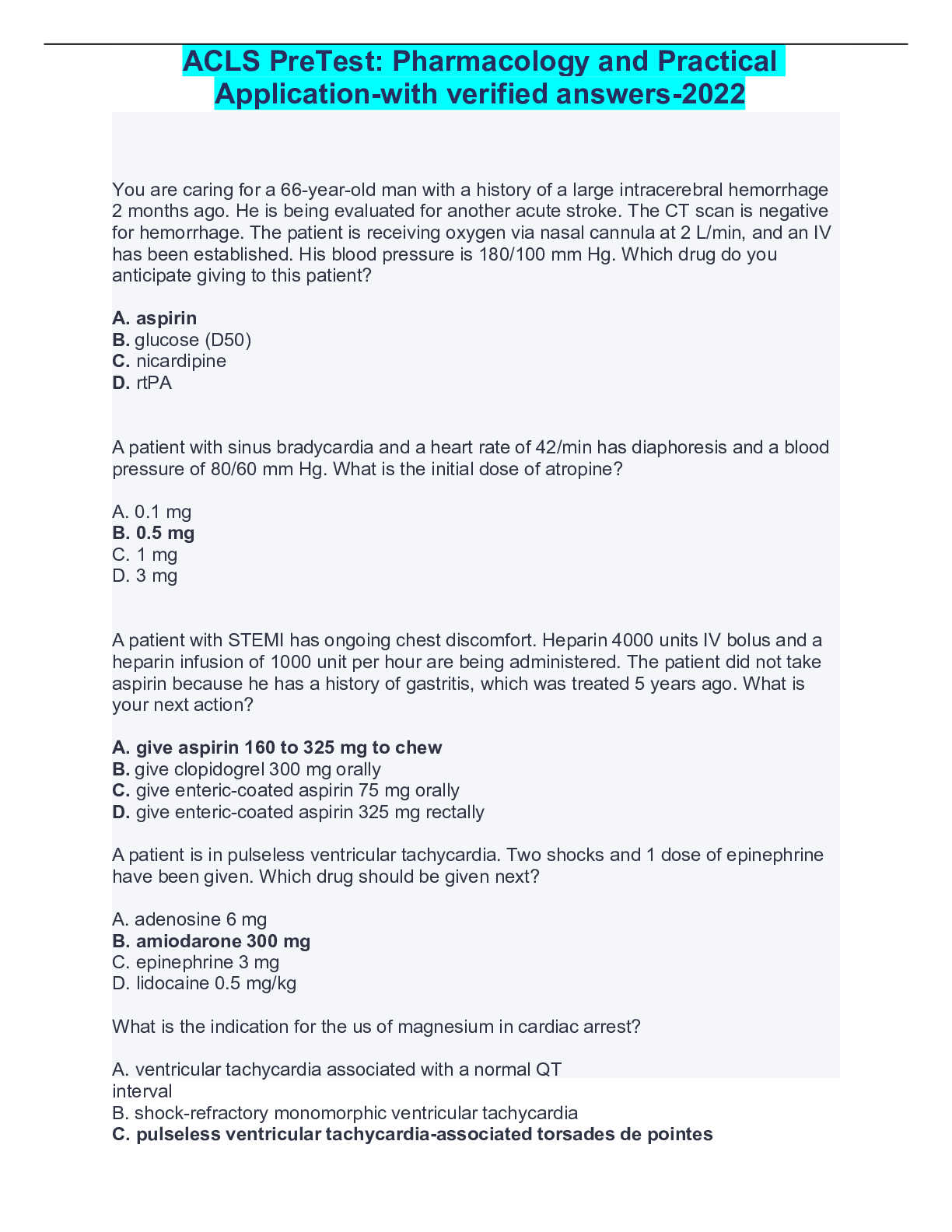
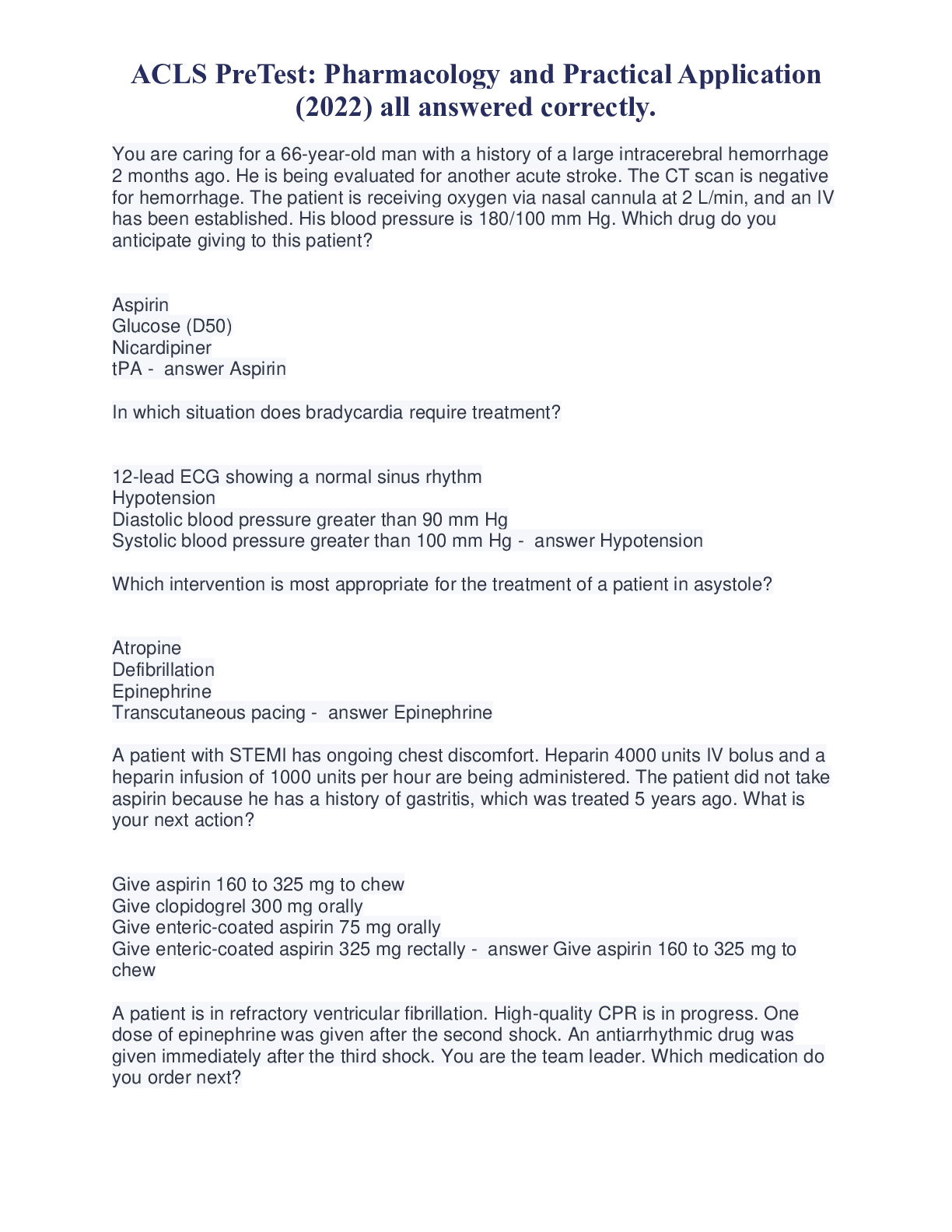
.png)
